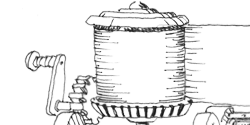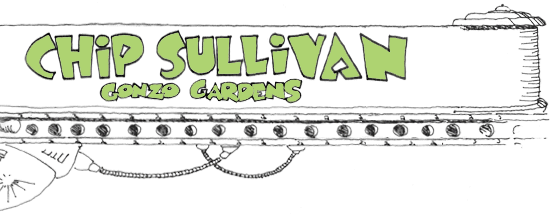BUY IT on Amazon.com
or
If you're in Berkeley, check for it at these local bookstores that we recommend:
Builder's Booksource
Moe's
SUMMARY
"Drawing is the root of everything."
--Vincent Van Gogh
Drawing is the most direct method of recording one's observations and documents how we transfer information to interpret the world. In his impassioned introduction to this book Chip Sullivan asserts, "With a single piece of paper and a mark making tool, I can create whole new worlds." He then devotes every chapter of Drawing the Landscape to showing you how you can do the very same and bring a new vitality to your drawing. Drawing the Landscape will enable you to gain the skills and confidence to create your own powerful and personally satisfying vision of the natural landscape.. Only through the physical act of drawing can we understand what we see. Drawing can be used to learn, to analyze, to see, to record, and to give form the gesture of thoughts. We draw to find answers that the standard conventions of photography and drafting prohibit.
Drawing the Landscape has just been released in an updated third edition with new material on using computers in landscape drawing, and with scores of new exercises, techniques, and illustrations, including a complete new chapter on "Animating the Landscape." This popular book continues to be adapted as a course text in landscape architecture programs throughout the country.
In summary, drawing is a process of discovery. It is the only way to personally partake of imaginary space and to clarify one's thoughts. When we fold up the maps and put away the globe, drawing takes us to lands uncharted, where we can more fully participate in our visions and dreams.
TABLE OF CONTENTS
Introduction.
1. The Essence of Drawing.
Definition of Drawing.
Drawing as Conceptualizing.
Drawing as Seeing.
Freedom and Structure.
The Power of Drawing.
The Spirit of Drawing.
2. The Daybook.
Types of Daybooks.
Media.
Mixed Media.
Doodles.
Daybook Variations.
3. The Creative Environment.
The Studio.
The Artistic Community.
Inspiration.
The Creative Process.
4. Equipment and Drawing Instruments.
Equipment.
The Pencil.
Drawing Paper.
Soft Media.
Pen and Ink.
Technical Pens.
Colored Pencils.
Watercolor.
5. Preliminary Drawing Exercises.
Holding the Drawing Instrument.
6. Tone and Texture.
Light, Shade, and Shadow.
Tone and Value.
Hatching.
Crosshatching.
Chiaroscuro.
Light.
Shadow.
Basic Solids in Tone.
Texture.
7. Drawing Techniques for Trees and Plants.
Contour Drawing.
Gesture.
Plant Forms.
Plant Structure.
Foliage.
Shadow.
Tree and Plant Massing.
8. Composing the Landscape Drawing.
The Picture Plane.
Drawing Paper.
The Classic Landscape Composition.
Optical Devices.
9. Freehand Perspective Drawing.
Linear Perspective.
Freehand Landscape Perspective.
Horizon Line.
Viewpoints and Vanishing Points.
Proportional Relationships.
Developing the Gestural Quality of Freehand Perspective.
Architectural Perspective.
10. Drawing the Landscape in Plan, Elevation, and Section.
The Landscape Plan.
Frame of Reference.
Scale.
The Freehand Conceptual Plan.
The Measured Plan.
Ground Plane Treatments.
Ground Plane Textures.
Water.
Architecture.
Trees and Vegetation.
Shadows.
The Elevation.
The Section.
Illustrating the Elevation and Section.
Elevation Perspective.
11. Axonometric and Isometric Landscape Drawing.
The Axonometric.
The Isometric.
Freehand Birdís-Eye.
The Exploded View.
Illustrating the Axonometric and Isometric.
Composing the Paraline Drawing.
12. The Figure in the Landscape.
Drawing the Figure.
The Life-Drawing Session.
The Skeleton.
The Muscles.
Proportional Systems.
Drawing the Figure in Gesture.
Fashion Illustration.
13. Animating the Landscape: Drawing with Vim, Vigor, and Vitality.
The Storyboard.
Animating and Embellishing the Wireframe.
Overlays.
The Gesture as a Design Tool.
The Design File.
The Portfolio.
14. Composing the Final Drawing.
The Mock-up.
Lettering.
The Competition Drawing.
Experimental Media: A Gallery of Ideas.
Conclusion.
Afterword.
References.
Index.








